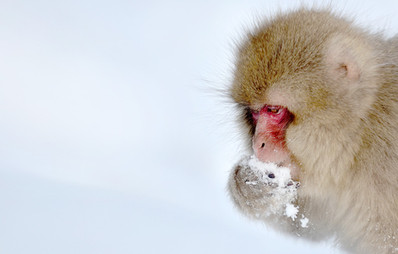Winter Japan Day 5 - Jigokudani Monkey Park
- AK
- Mar 5, 2015
- 3 min read
Updated: May 2, 2019



There are 2 common ways to get to Jigokudani Monkey Park (地獄谷野猿公苑 Jigokudani Yaen Kōen) from Nagano station:
A) By Nagaden Bus.
B) By Nagano Dentetsu limited-express train to Yudanaka station, followed by either a short local bus ride or taxi.
The first option is obviously simpler, which is hence our choice. In both instances, you'll need to walk around 40 minutes to the Park anyway.
Simply go to bus stop number 3 or 4 outside the East Exit of Nagano train station (take the elevator one floor down). The bus departure times and their respective bus stop numbers are shown in the scanned leaflet above. However, do check with the information centre in the train station for the latest schedule.































(Above) Macaques enjoying the hot spring. Photography and videography are allowed, including flash. Don't be surprised when a huge lens suddenly pops out over and above you. Spotted a few 300mm f2.8 and one 200mm f2 poking around.




And if the load of photos above has not bored you too much with the snow monkeys till now, here is a link to a short video of these gorgeous animals:



The Enza Dining and Café is located near the info and gift shop. Probably the only convenient place to grab lunch in the area.






















And finally, ending Day 5 with some nice Japanese food and without saying, a bottle of hot sake on this very cold night.
(Monkey) Mission accomplished!
GENERAL INFORMATION:
Date: February 2015
Accommodation: Ryokan Asunaro, Takayama (http://www.yado-asunaro.com/english/)
GENERAL TIPS:
The weather could feel colder than the numbers suggest due to wind and flurry. It's better to be over than under-prepared. Do bring along REAL winter jackets from reliable makers.
Jackets with hoods are absolute essentials. Scarfs, neck and face warmers are very effective as well. Some locals were even wearing ear muffs.
Bring a good pair of gloves that are thick enough but also fit well. Better if it's a pair of touchscreen-enabled gloves since we use our smartphones so often. It can be annoying if you are planning to use your smartphone as your camera and need to remove your gloves every now and then.
Consider bringing heat packs as well to add some warmth in your pockets.
Cold weather is dry weather. Bring some REALLY good moisturiser with you. Those little travel-size tubes will not be enough as it's easy to underestimate the amount of moisturiser needed everyday. Bring different types if you are particular about application on different areas like body and face (remember to check-in if it exceeds 100ml).
Get a pair of snow boots or equivalent. Sinking your feet into thick snow (intentionally, inevitably or accidentally) means water seepage into your shoes. Having water in your shoes and wetting your socks in winter do not seem like a good idea.
Walking on icy surfaces is extremely slippery too. I've seen many people in their usual sneakers, running or cross-trainer shoes slipped and fell. Otherwise, you may buy an ice-spike sole attachment (around 1,500¥ a pair) to enhance your foot grip. They are available in most souvenir shops.
A pair of shades/sunglasses would be useful as the snowy landscape can be rather glaring.
PHOTOGRAPHY INFO & TIPS:
Was using Nikon D5100, Nikon AFS DX 10-24mm f3.5-4.5, Sigma 17-70mm f2.8-4 DC, Nikon AFS 50mm f1.4, Nikon AFS VR 70-200mm f2.8, Sony HX50V, Sony Action Cam AS30V, Apple iPhone 6, Samsung Galaxy Edge.
Other than keeping your hands warm and functionable, gloves should be of perfect fit to handle and operate your camera easily. Best if they are designed for winter photography. Get touchscreen-enabled gloves if you're using cameras with touchscreen feature.
Consider bringing cameras with bigger buttons and controls if you don't mind the bulk. I find it hard to use those tiny buttons on the D5100 with my gloves on.
Make sure your equipment can be used in sub-zero environment. Perhaps, do a test in your home fridge before your trip. This includes your lens as many lenses have complex electronic components these days.
Use a lens hood. It can be useful to prevent snow from hitting the glass directly, which can be annoying and hard to wipe dry.
Extra batteries are critical as they deplete fast in cold weather.
A waterproof outermost jacket with a hood could potentially eliminate the need to carry an umbrella during light snow. Imagine carrying an umbrella while trying to shoot.
Most indoor areas are well heated during winter, which is great for us but not our lenses. If you have stayed in the warm indoors for long enough (e.g. for a meal), condensation will occur. Hence, try to keep your camera cold in the bag if you want to be able to shoot immediately.
















































Bình luận